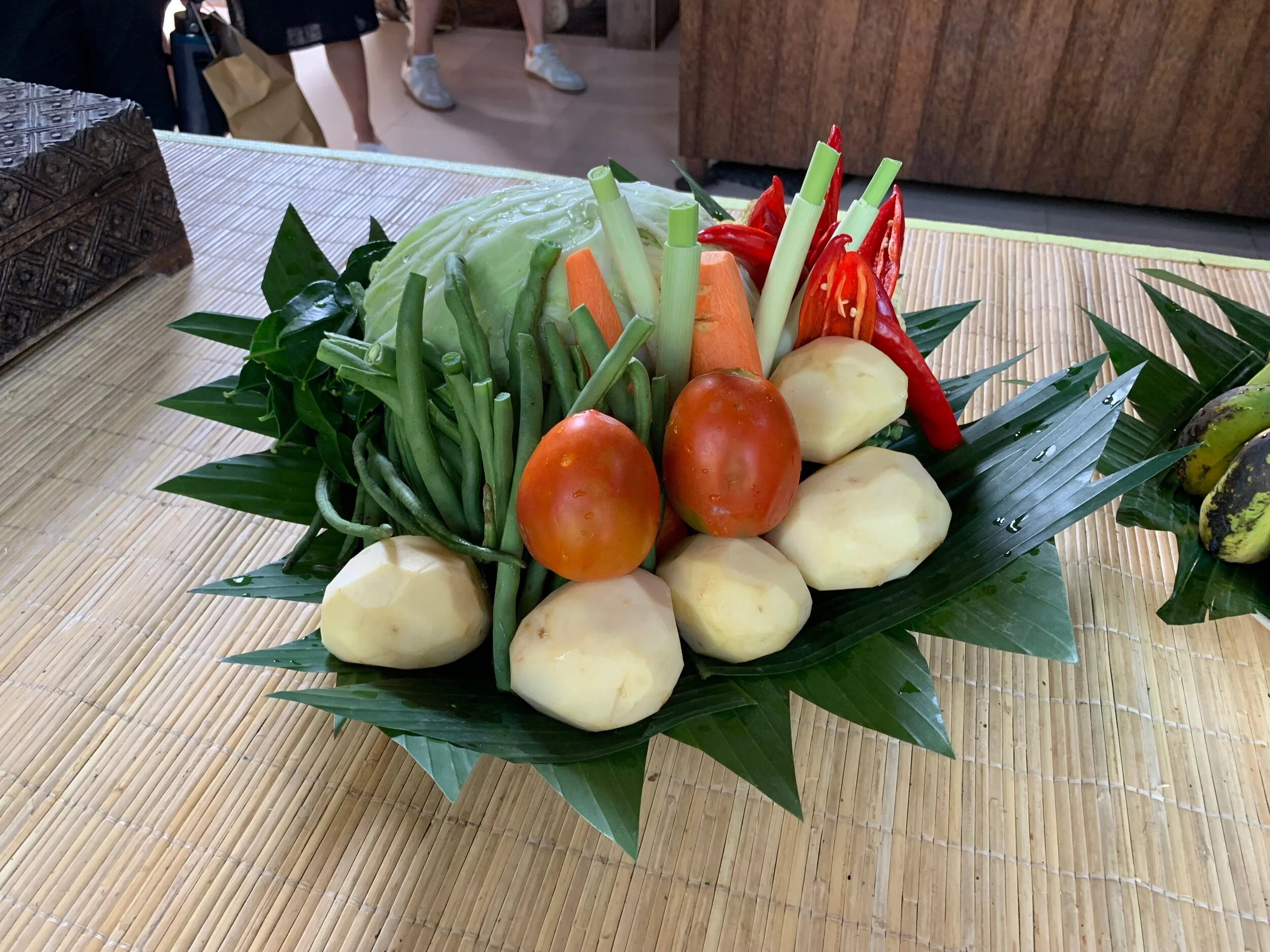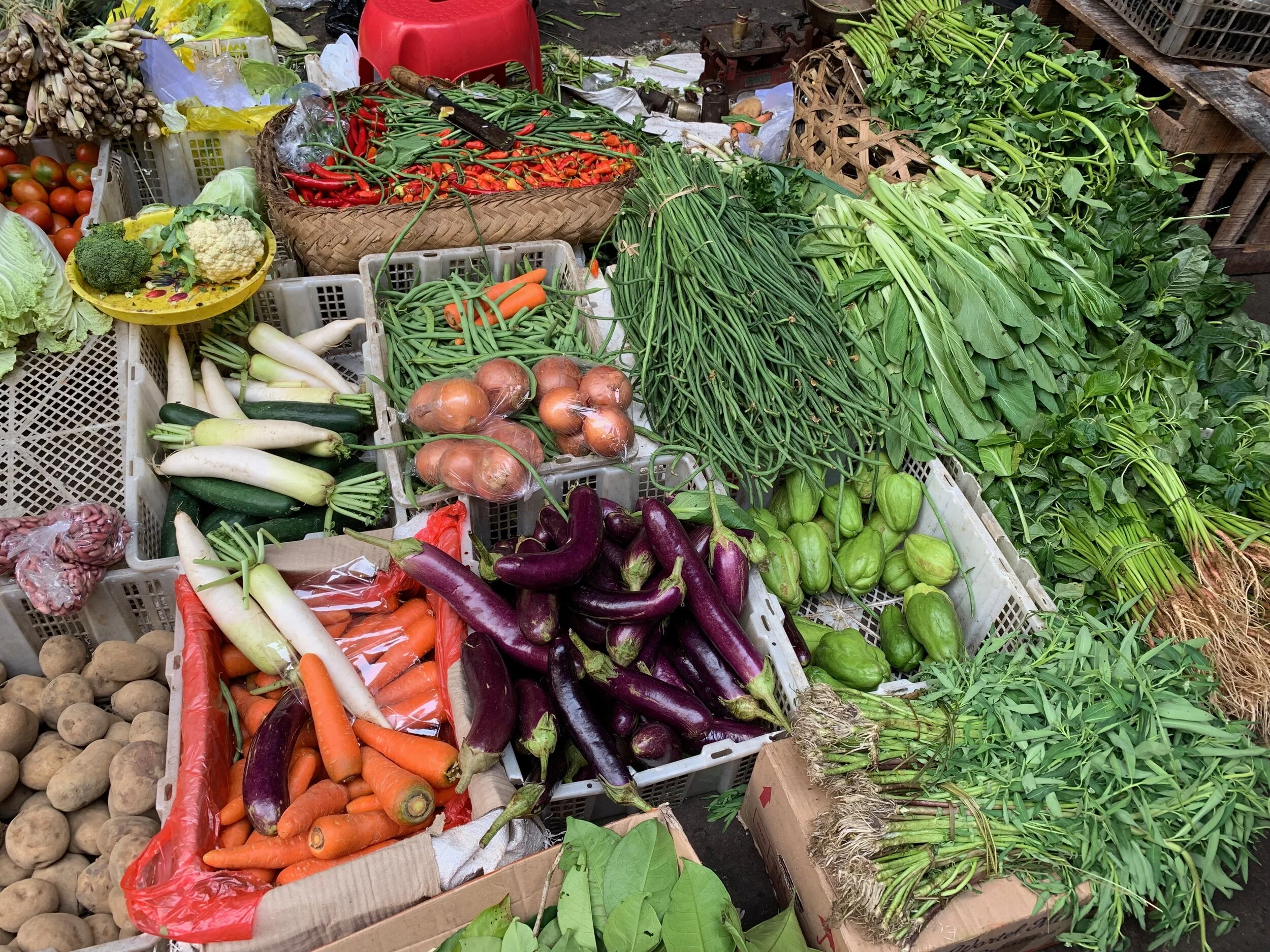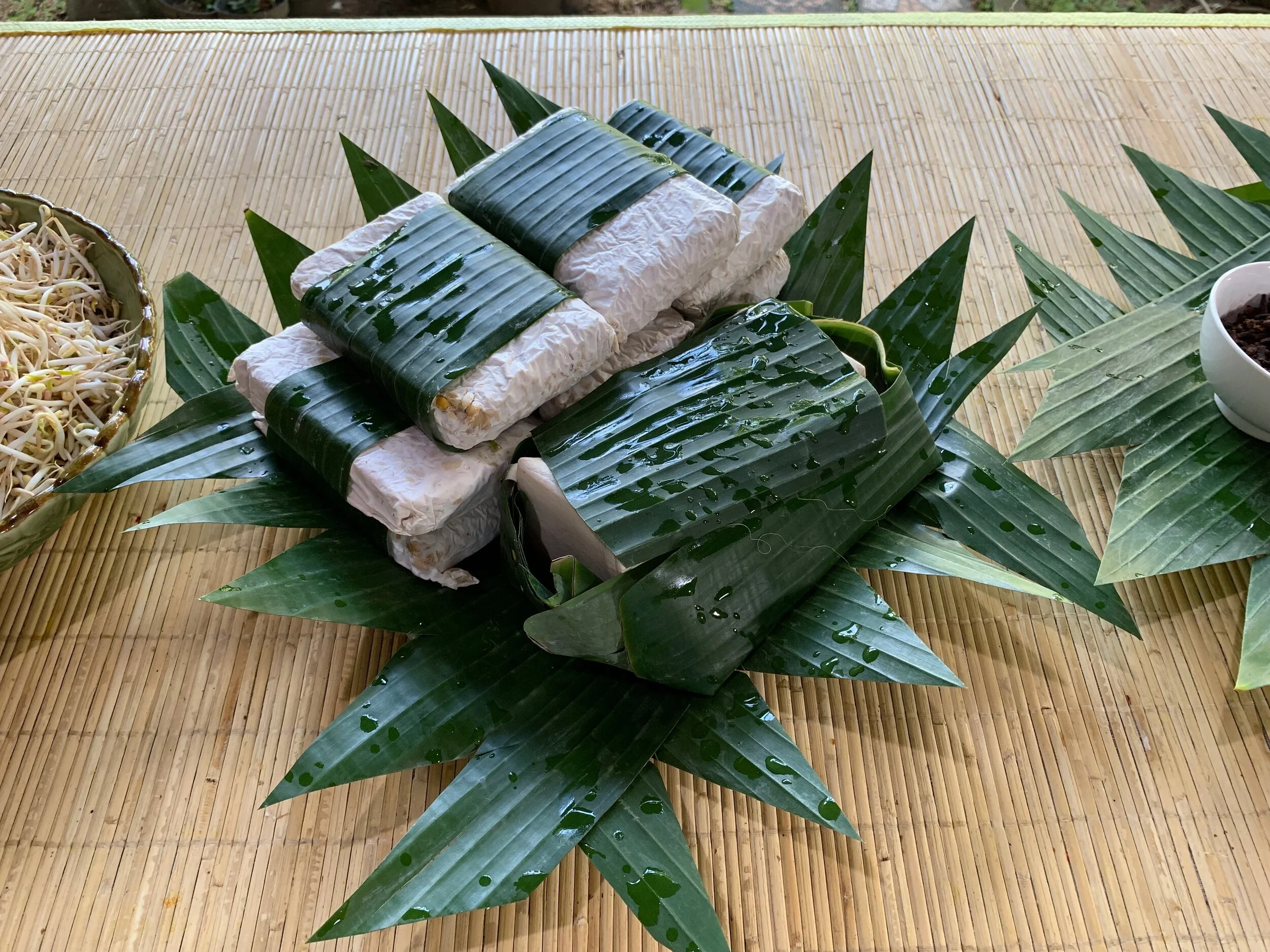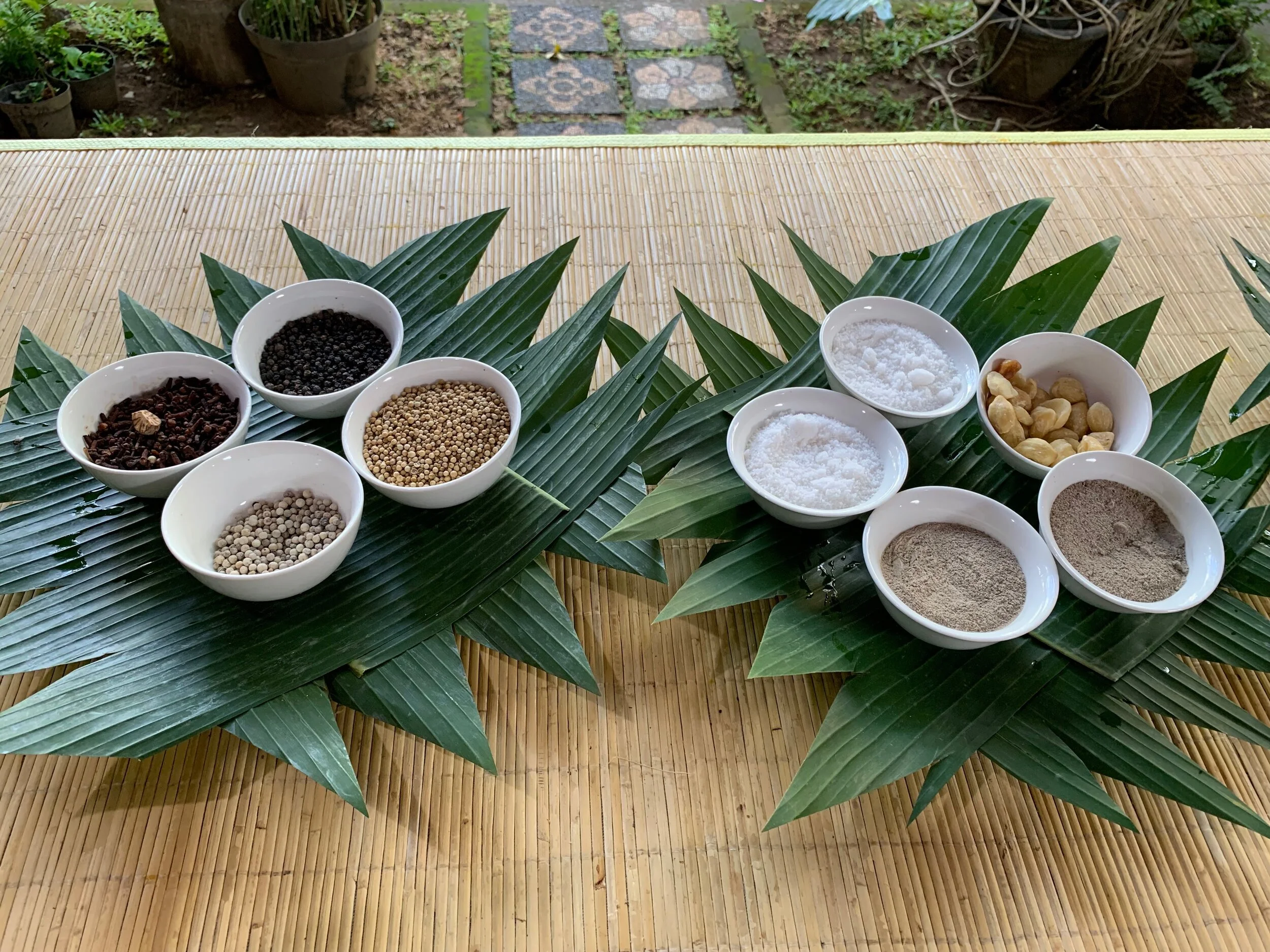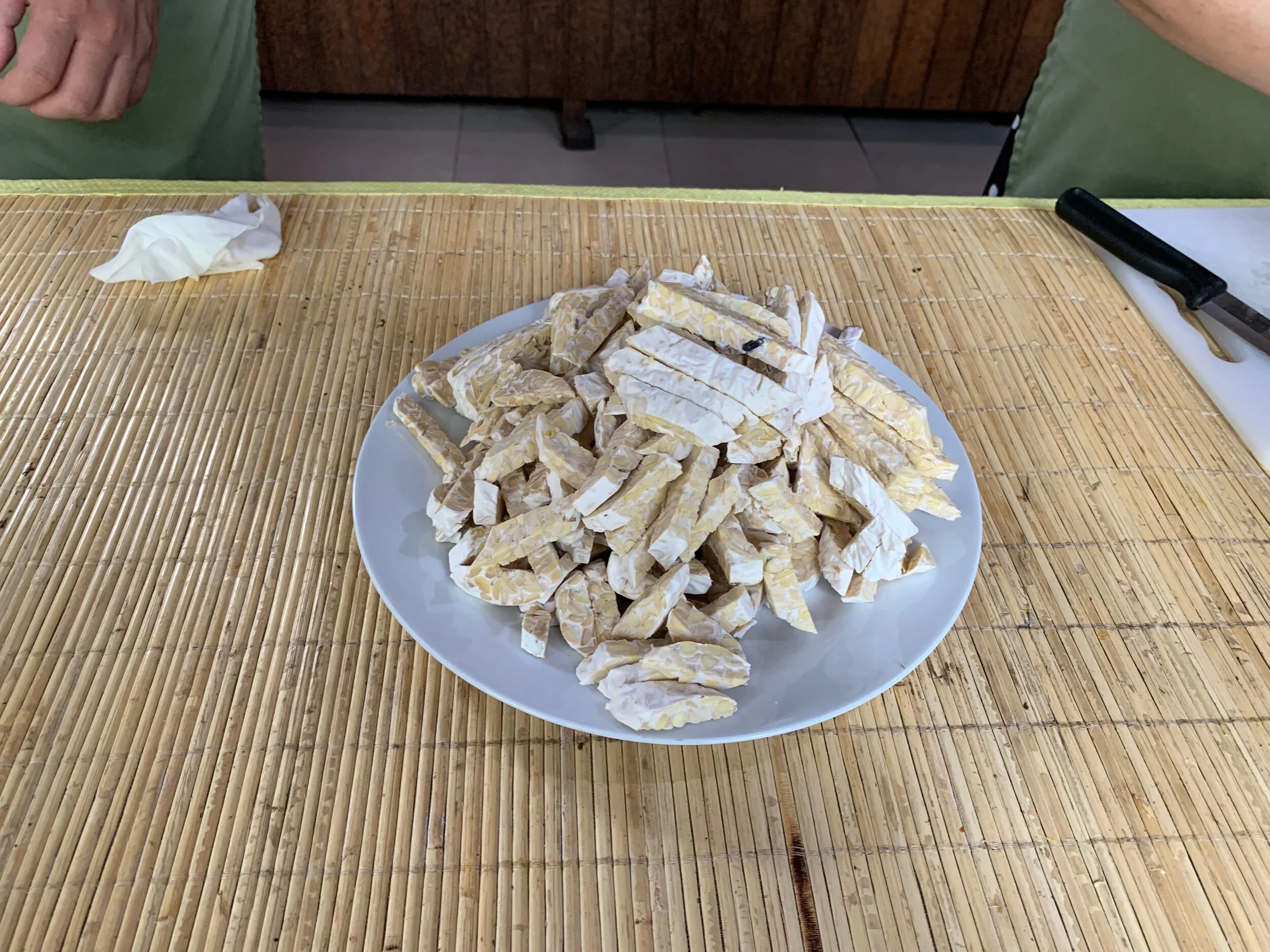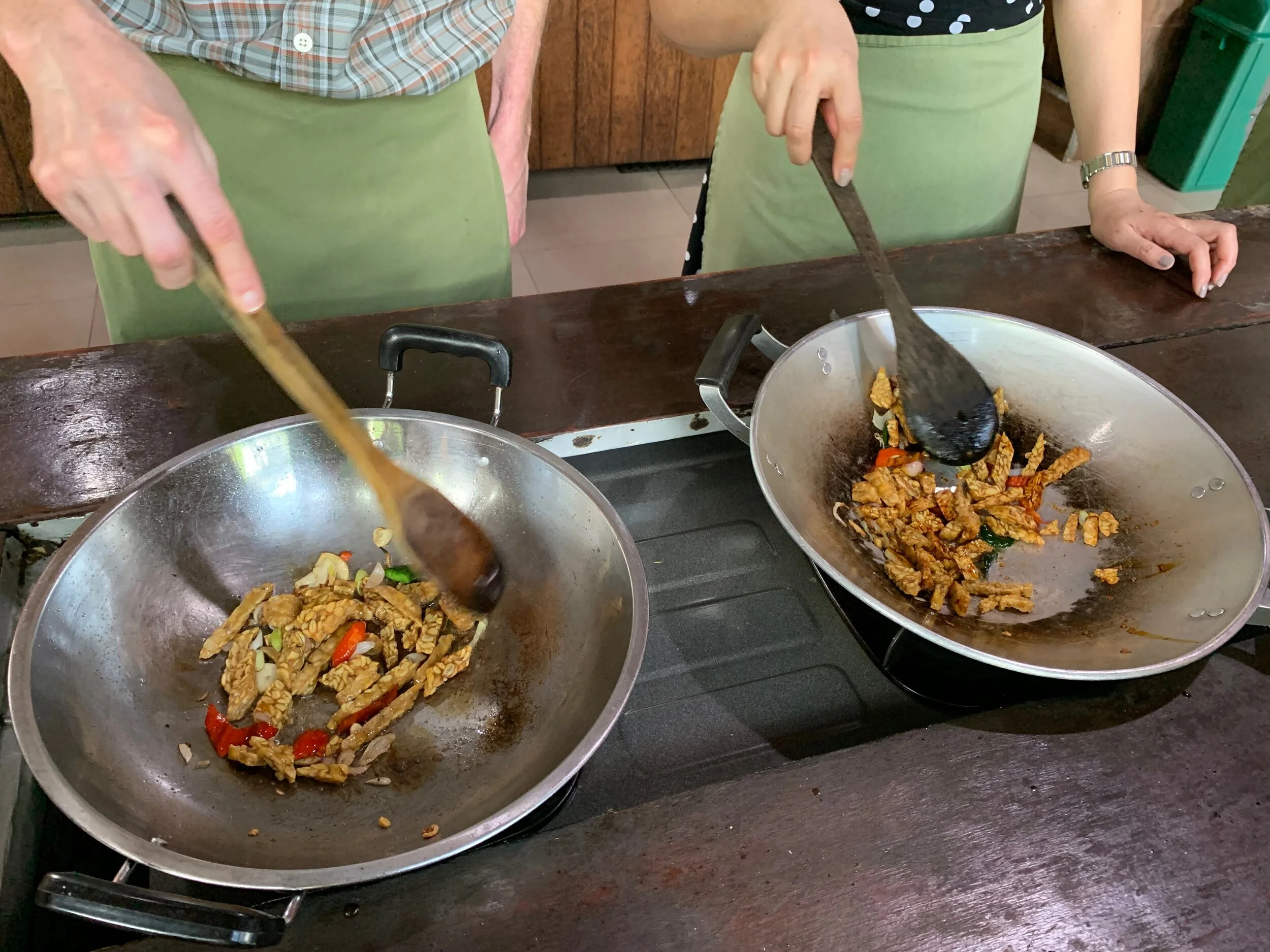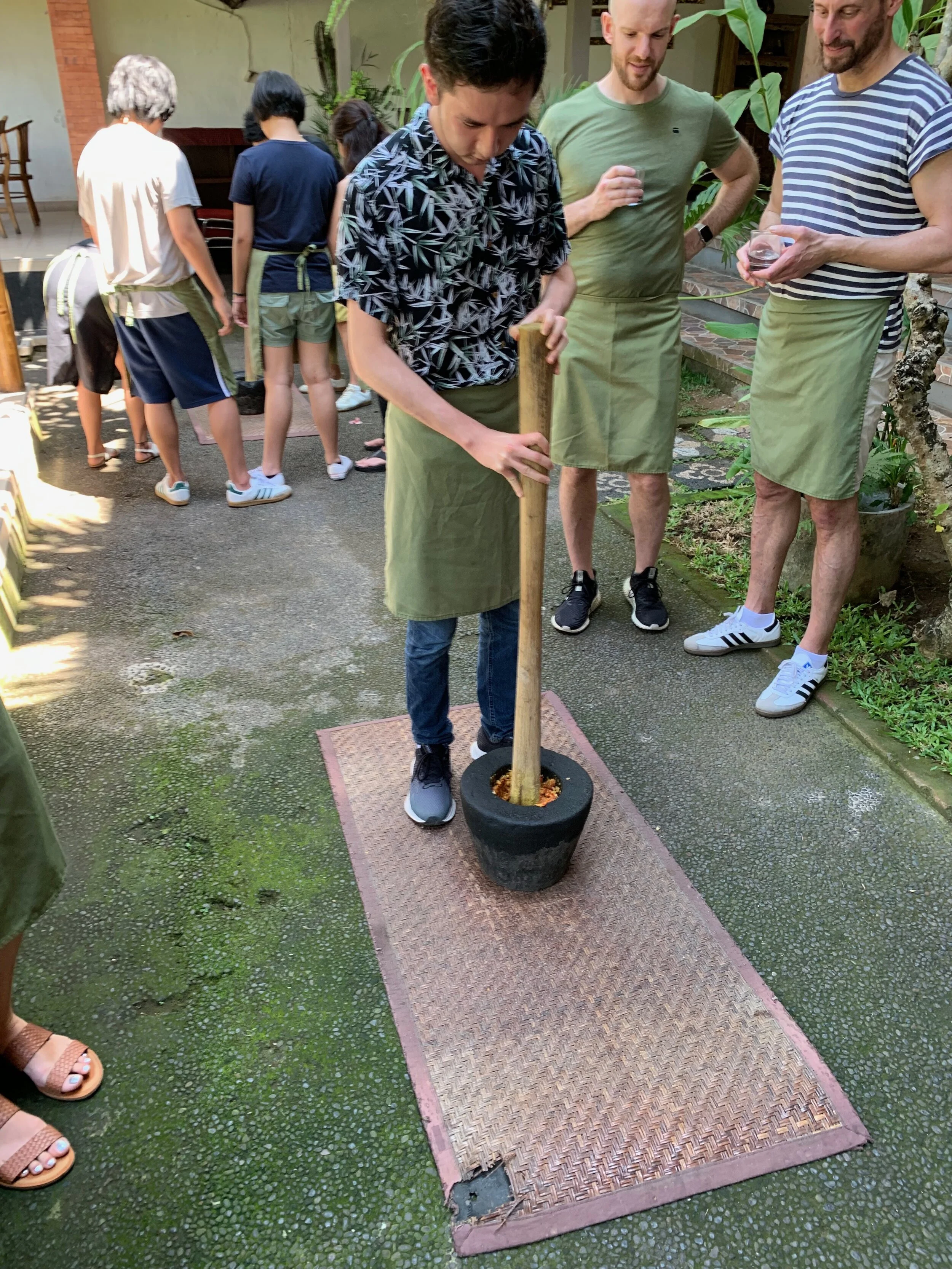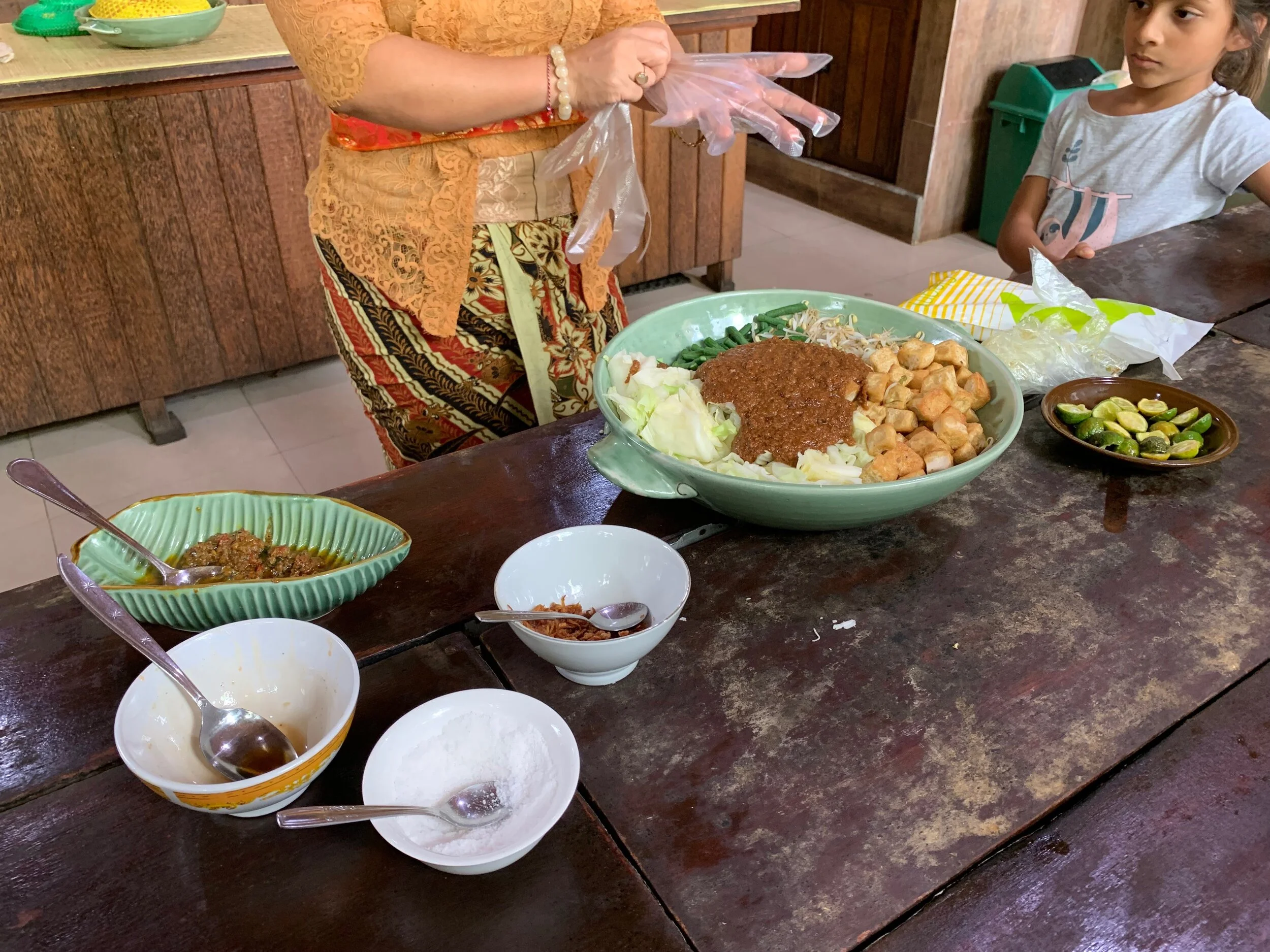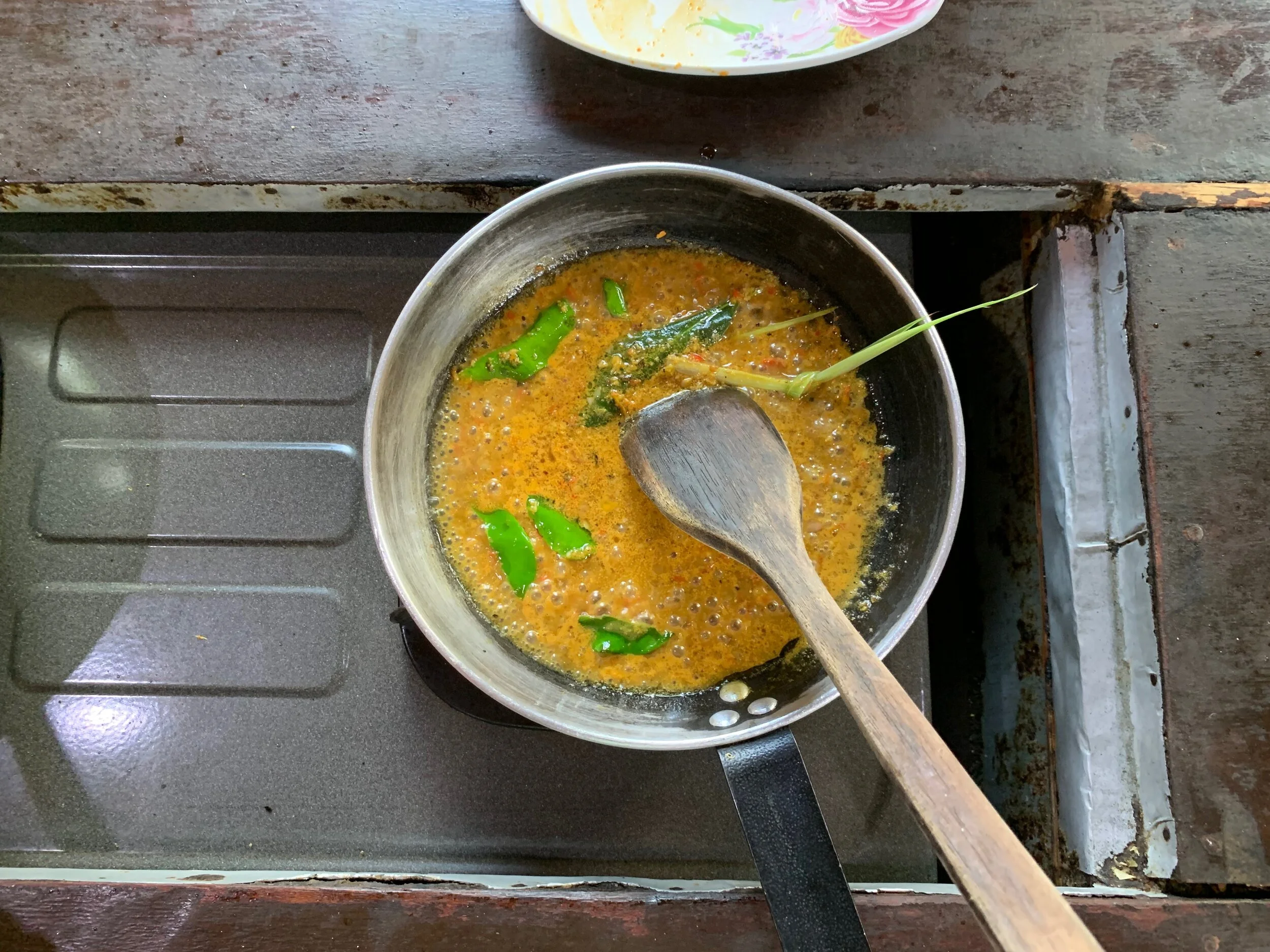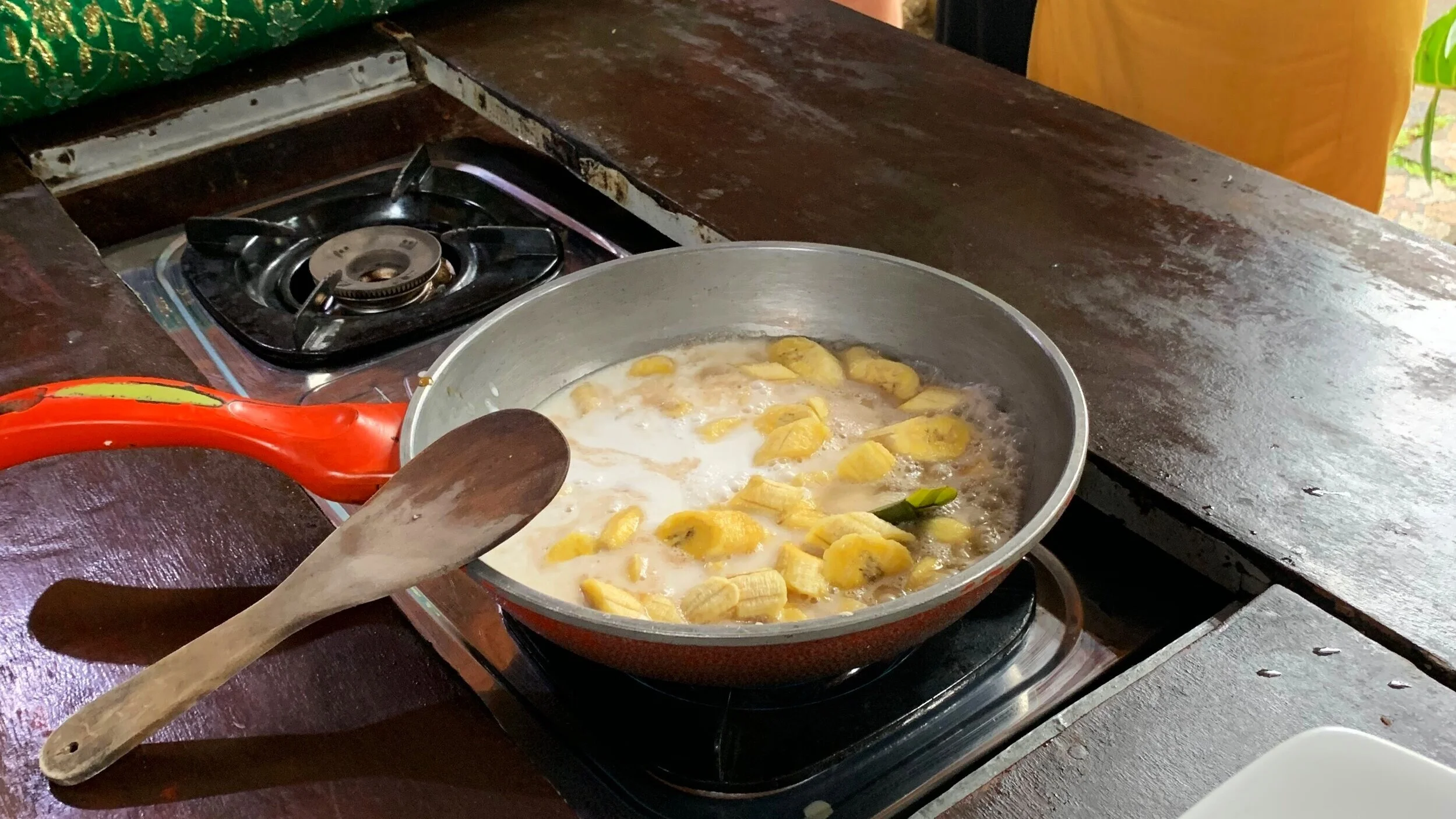Learning to Cook Balinese Food in Ubud, Bali
Author & Photographer: Erica Hogan
Before going to Bali this winter, I had never tried Indonesian food before. I quickly learned that there was lots to love. I started drowning everything I ate in sambal matah, a chili-shallot relish. To learn more about Indonesian food and Balinese food, I decided to take a cooking class at Paon Bali in Ubud.
I was picked up at 8 am, and driven straight to the morning market in Ubud. All around me were piles of vegetables, spiky durians, hairy rambutans and baskets full of salted sardines. Spice sellers hawked Indonesia’s prized flavors, like the more familiar cinnamon and nutmeg, and spices I’d never tasted before, like kaempferia galanga, more commonly known as aromatic ginger.
From there, I was driven through central Bali’s famous rice paddies to the home of Puspa and Wayan and their family in the village of Laplapan. There, we got to work. On the menu for the day was sup jamur, a clear vegetable soup with mushrooms, bumbu kuning, or yellow curry paste, which would be the base for a chicken curry, called kare ayam in Bahasa Indonesia, a coconut and snake bean salad, gado-gado, which is a salad dressed in peanut sauce, sate lilit ayam, which is a satay made from minced chicken, and tempeh kering, which is tempeh deep fried and tossed in sweet soy sauce.
We started by making peanut sauce from scratch using a mortar and pestle, which Puspa called an “Indonesian blender.” We also made fresh curry paste using a mortar and pestle, grinding down spices and aromatics. I’d had peanut sauce and food flavored with curry paste before, but didn’t really know what actually went into each of them. Making both sauces from scratch made a huge difference–they tasted so much fresher and more complex than what I was used to.
Indonesian foods are very highly spiced, giving everything a deep and rich flavor, but I discovered that making the dishes was actually not that difficult. Of course, I had Puspa and her team helping me along the way, but as I cooked through the recipes, I felt like I could make everything myself at home. Puspa’s cooking class gave me the confidence that I could make delicious food at home.
Before I knew it, we had made a full feast. Everything turned out beautifully, perfectly seasoned and delicious! I had two full plates of food.
After dinner came dessert, kolak pisang, which is banana cooked in palm sugar. At this point, we were all full and tired, so Puspa and her team did all the cooking while we watched. The bananas were so tender, perfectly complemented with coconut cream and caramel-like palm sugar syrup.
I’d tried tempeh before coming to Indonesia, and I hated it. I’d never had it prepared how Indonesians eat it, however, so I figured I should give tempeh another try. I’m so glad I did, because tempeh kering has converted me into a tempeh lover. See for yourself with the recipe below!
Tempeh Kering - Deep Fried Tempeh Tossed in Sweet Soy Sauce
Ingredients:
2 packets of tempeh
10 red chilies
5 tablespoons Indonesian sweet soy sauce (kecap manis)
4 shallots
8 cloves of garlic
1 spring onion
5 kaffir lime leaves
¼ liter oil (preferably coconut oil)
Salt and pepper
Instructions:
Slice the tempeh into thin strips.
Heat oil in a wok.
Add tempeh to the wok. Do not move the tempeh at all until it starts to brown.
Once the tempeh is slightly browned, lightly stir.
Remove the tempeh from the oil once it is golden brown.
Slice red chilies and remove seeds. Slice garlic, shallots, spring onion and kaffir lime leaves into thin slices.
Saute chilies, garlic, shallots and spring onion until lightly browned.
Add the tempeh, sweet soy sauce and kaffir lime leaves to the pan. Stir well to coat the tempeh in the sauce.
Adapted from a recipe by Pupsa from Paon Bali


